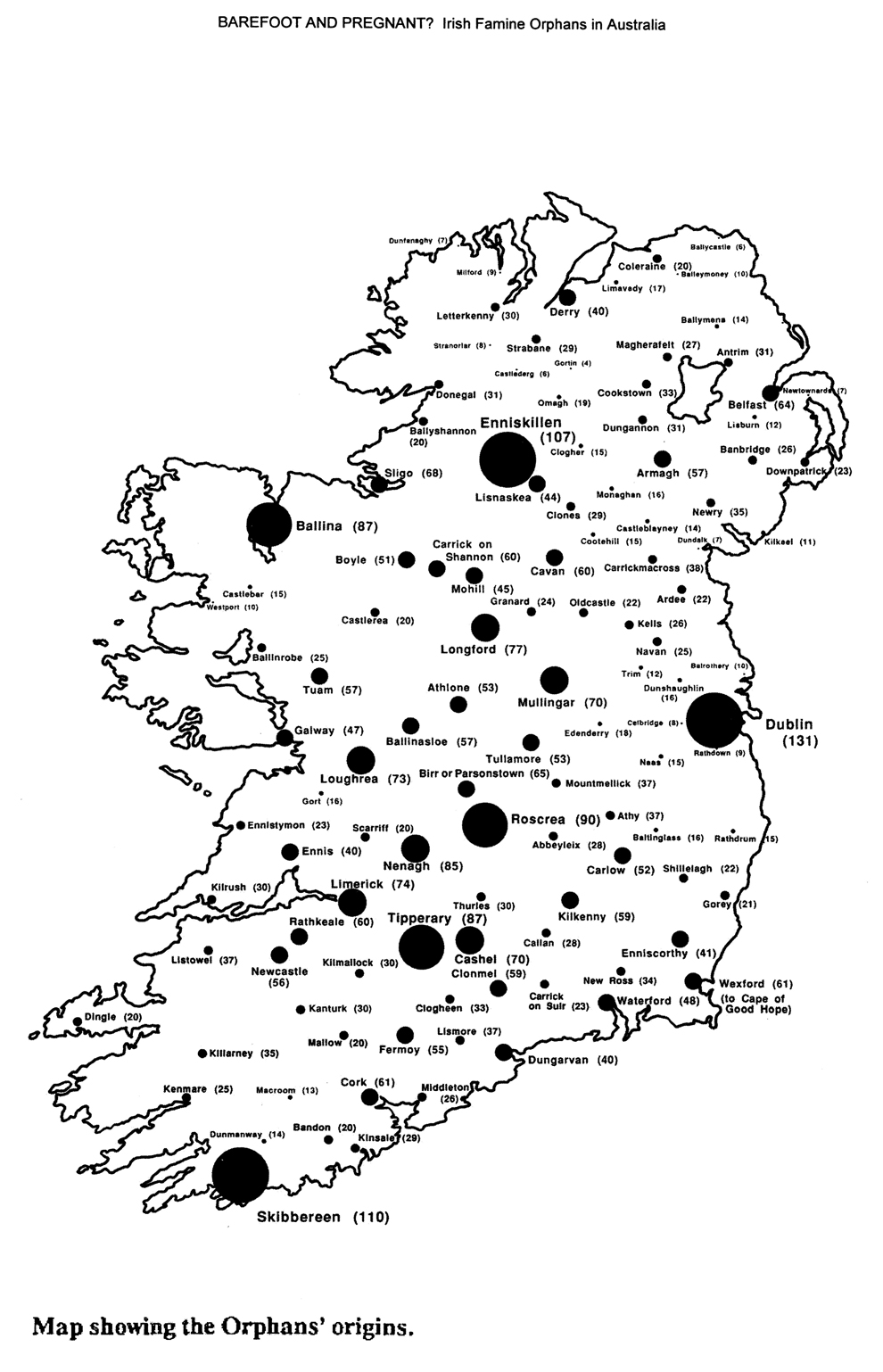INTRODUCTION
Throughout the 19th century Ireland saw an exodus of people to all corners of the world especially to the colonies and former colonies governed by the British, in particular to Canada, United States and Australia. These countries are often referred to now as the Irish Diaspora.
The majority of those who left Ireland during that period for Australia, left in because of economic circumstances in Ireland and the lure of a better life. The rebellion of 1798 saw many Irish men transported to the penal colony of New South Wales. Minor famines or ‘subsistence crises’ contributed to numbers leaving over the next forty years, but these numbers were small compared to the numbers who left Irish shores during the Great Famine (1845-1850) and its aftermath.
Post-Famine Irish immigration to Australia was very significant with some writers claiming that over 30,000 single Irish women alone arrived over a fifteen-year period between 1848 and 1863. In a male dominated society, these numbers altered the demographics of Australia in a very significant way. There are also claims that 30% of Australia’s present population have some Irish blood in their veins. If that is the case, then you may be returning to this site many times in the future.
The Australian Famine Monument is a memorial to the million or so who died during the Famine period. It is a monument to those who survived and, in a very special way, to the 4114 Famine ‘orphans’ who arrived in Australia under the Earl Grey scheme between 1848 and 1850. It is a monument to their success, and recognises their contribution to the building of this great country. The information on the website mainly concerns these women. The site will be updated as information comes in. In fact, if you want to have a profile of your orphan ancestor printed on the web, this can be arranged for a small fee of $20.00.
The Australian Monument to the Great Irish Famine is situated in Sydney, in the grounds of the Hyde Park Barracks Museum and thanks is extended to Sydney Living Museums (Historic Houses Trust Ltd) who is the custodian.
Tom Power



